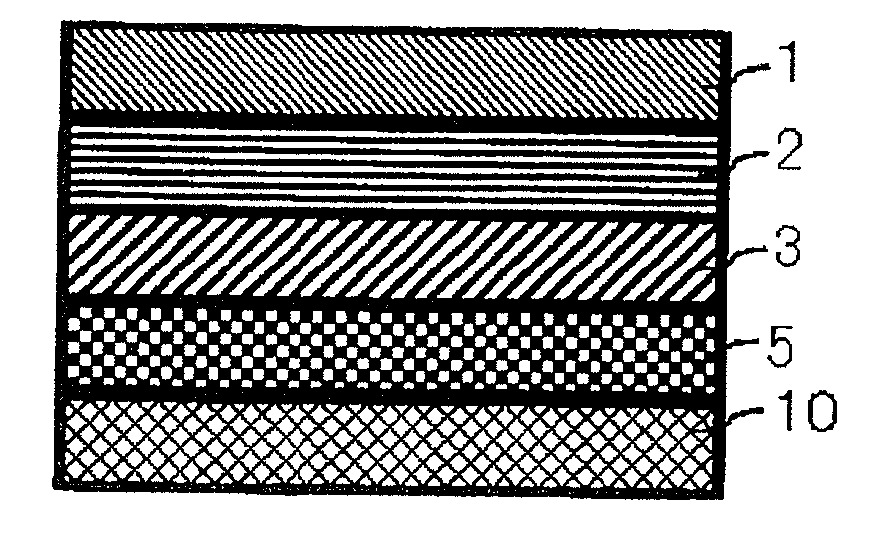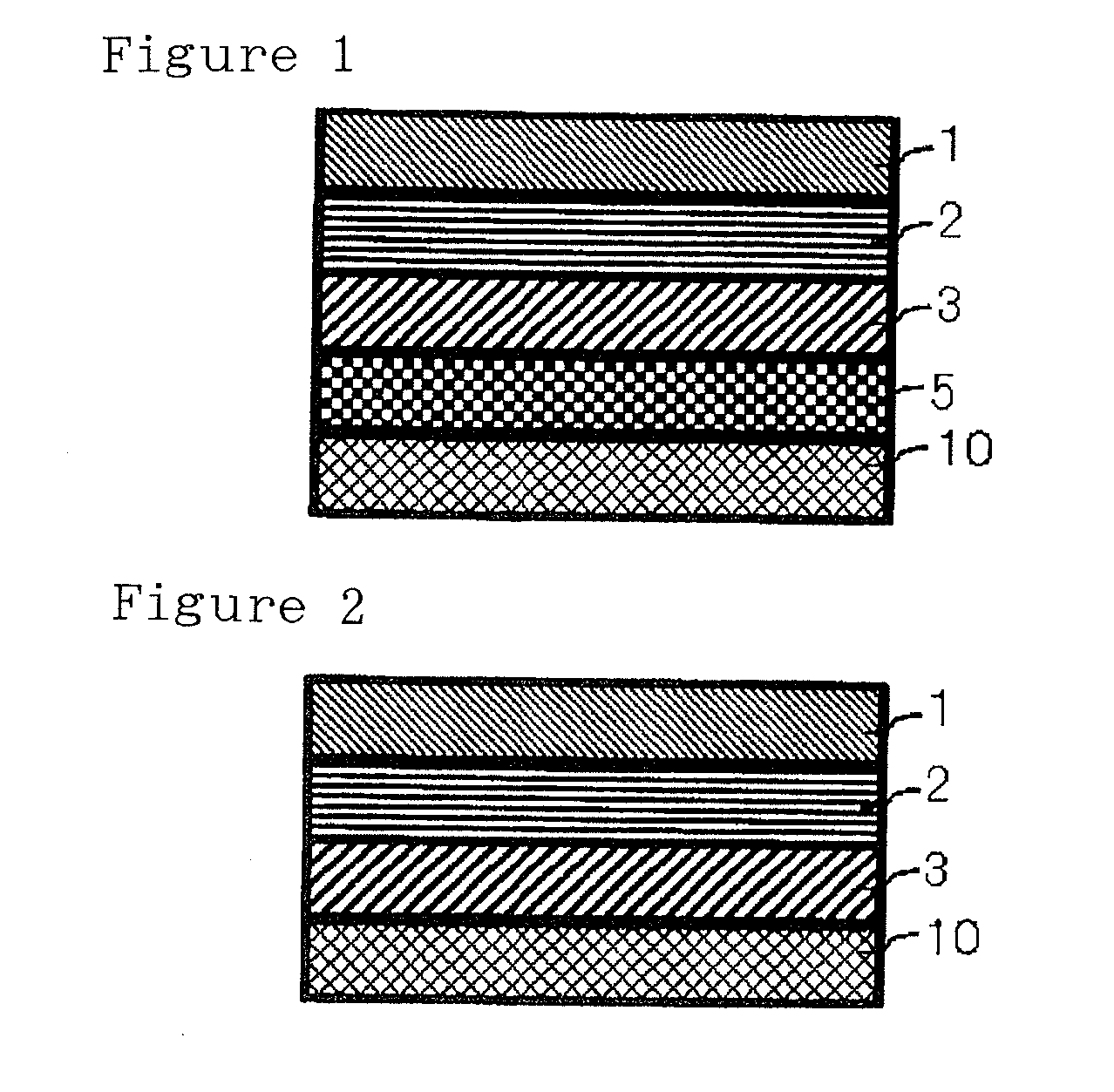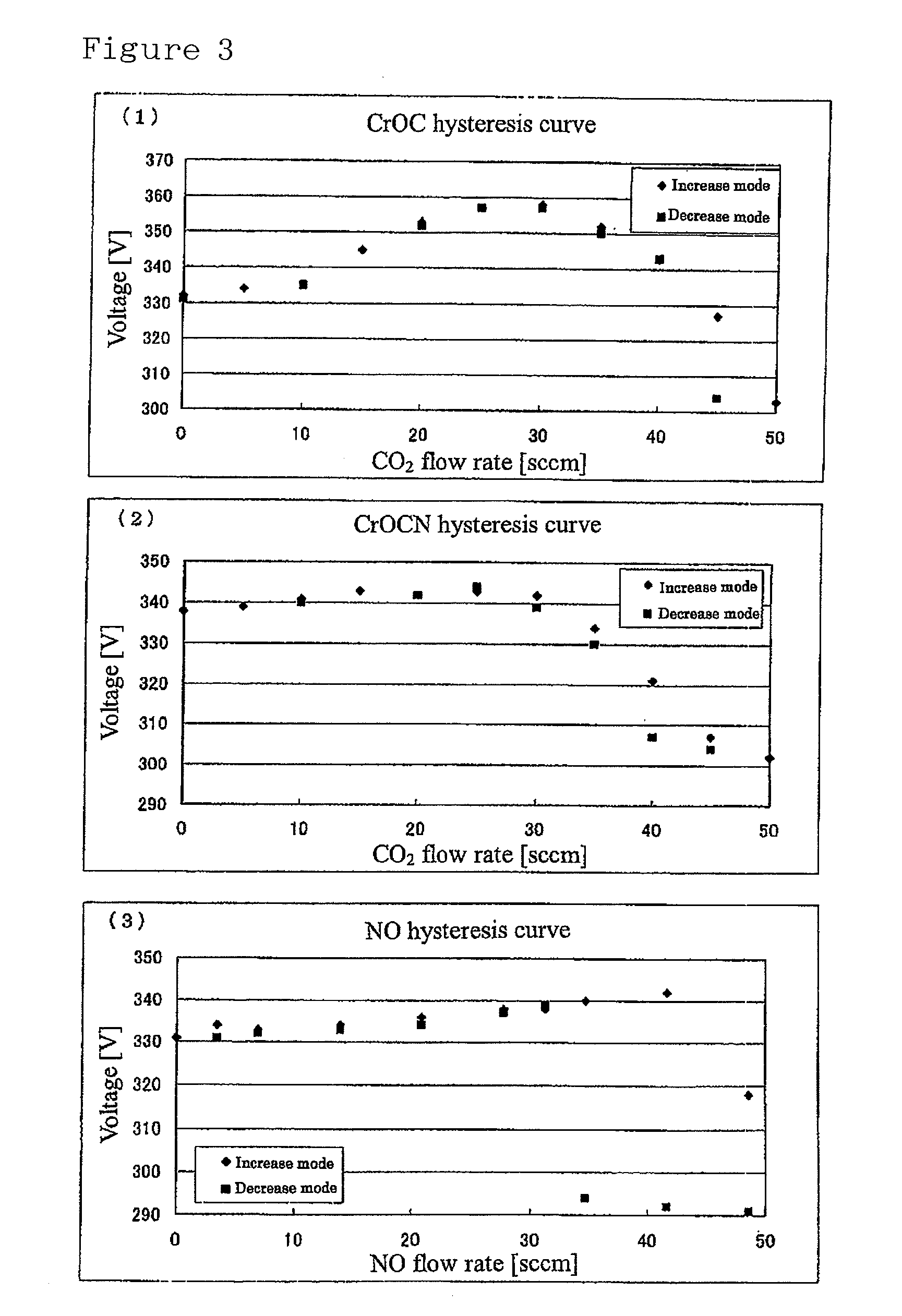Photomask blank, photomask, and method of manufacturing photomask blank
a technology of photomask and blank, which is applied in the field of photomask blank, photomask and photomask manufacturing method, can solve the problems of no optimization, pattern collapsing, etc., and the thickness of the photomask is reduced, and the over-etching time is reduced, and the thickness of the light-shielding film is reduced. , the effect of reducing the thickness of the light-shielding film
- Summary
- Abstract
- Description
- Claims
- Application Information
AI Technical Summary
Benefits of technology
Problems solved by technology
Method used
Image
Examples
first embodiment
1. First Embodiment
[0050]The photomask blank according to the first embodiment of the present invention is a photomask blank for producing a photomask to which an ArF excimer laser light is applied, wherein:
[0051]a thin film having a multilayer structure is provided on a light transmissive substrate; and
[0052]the uppermost layer of the thin film has an amorphous structure made of a material comprising chromium and at least one of nitrogen, oxygen and carbon.
1.1. Light Transmissive Substrate
[0053]The light transmissive substrate is not particularly limited as long as it is a substrate that is light-transmissive. Examples thereof include a quartz glass substrate, an aluminosilicate glass substrate, a calcium fluoride substrate, and a magnesium fluoride substrate. Among them, the quartz glass substrate is preferred, because it has a high flatness level and a high smoothness level, and because, when transferring a pattern to a semiconductor substrate using a photomask, distortion of a t...
second embodiment
2. Second Embodiment
[0110]At the time of processing a light-shielding film formed on a light transmissive substrate, the present inventors found the following matters:[0111](1) in the case of a two-layer structure consisting of a light-shielding layer and a front-surface antireflection layer, when the light-shielding layer that is a lower layer is formed with a material having a low etching rate, longer over etching time is required, and as a result, the total etching time is increased, whereas when the lower layer is formed with a material having a high etching rate, clear etching time is reduced, but there is a case where over etching time is increased due to loading, and thus, it is difficult to reduce etching time when using the two-layer structure;[0112](2) in order to reduce over etching time, it is preferred to employ a three-layer structure consisting of a back-surface antireflection layer, a light-shielding layer and a front-surface antireflection layer, wherein a material ...
third embodiment
3. Third Embodiment
[0130]When oxygen is included in a metal-containing layer which constitutes a light-shielding film, the etching rate is increased, but the optical density per unit film thickness is decreased, and as a result, the thickness of the light-shielding layer is increased. Further, in the case of a film having a single speed in which there is no difference of etching rate in the longitudinal direction, variation of the cross-section shape due to loading tends to easily occur.
[0131]Further, in the case of a photomask exposed to an ArF excimer laser light, it preferably has a structure having a back-surface antireflection layer and a front-surface antireflection layer in order to prevent reduction of the pattern accuracy caused because reflected light from a transferred product such as a semiconductor substrate returns to the transferred product. However, in the case where a light-shielding film having such a laminated structure is designed with the limitation in which the...
PUM
| Property | Measurement | Unit |
|---|---|---|
| thickness | aaaaa | aaaaa |
| thickness | aaaaa | aaaaa |
| thickness | aaaaa | aaaaa |
Abstract
Description
Claims
Application Information
 Login to View More
Login to View More - R&D
- Intellectual Property
- Life Sciences
- Materials
- Tech Scout
- Unparalleled Data Quality
- Higher Quality Content
- 60% Fewer Hallucinations
Browse by: Latest US Patents, China's latest patents, Technical Efficacy Thesaurus, Application Domain, Technology Topic, Popular Technical Reports.
© 2025 PatSnap. All rights reserved.Legal|Privacy policy|Modern Slavery Act Transparency Statement|Sitemap|About US| Contact US: help@patsnap.com



